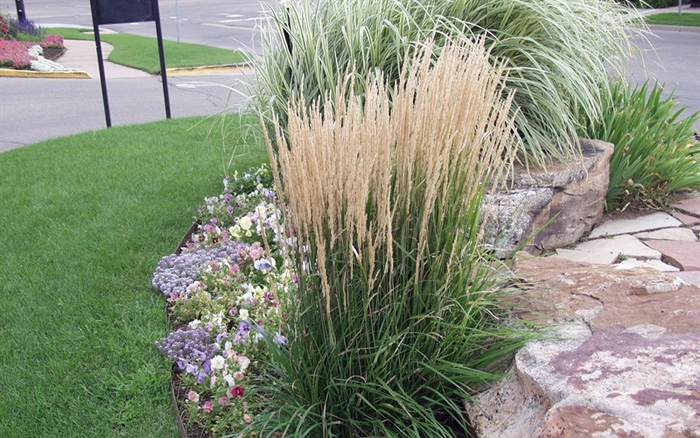Karl Foerster grass has become a staple of our landscapes. Whether as a centerpiece in a garden, a privacy wall for your patio, or simply a plant for those tough areas, we all have come to appreciate this graceful grass. Getting 4 – 5 feet tall with beautiful, soft feathery plumes of sterile seeds, this plant is truly a must have. Did I mention it is hardy? Tough as nails the Karl Foerster grass is a Zone 3, able to take the beating of our painfully cold Manitoba winters. But now here is a little history lesson. Where did the grass originally come from? And how did it get its name? Let me take you on a journey back to the late 1800’s, Europe.
Karl Foerster, raised in Germany, son of a painter and an astronomer had a great love of plants. He owned his own perennial greenhouse based in Potsdam-Bornim where he would experiment in cross breeding and hardiness trials. He would often go out and find new plants and bring them back to his garden where he would test them for their hardiness. He loved perennials especially, striving for garden beauty for all seasons. One particular one caught his eye so much that he stopped the train he was on just so he could get off and dig it up. This plant was a tall graceful grass, hidden away on the side of the tracks. This would later be named ‘Karl Foerster’ in honour of the man who discovered it. Foerster was somewhat of a plant genius, having successfully crossed over 300 breeds of perennials from all over the world. His particular favorites were the clumping grasses (Thus the karl foerster grass), Phlox, and Delphinium. Karl Foerster was a man of courage and determination as well. Having survived with his greenhouse through the great depression and World War 2, even having the courage to hire his Jewish friends as staff despite the risks. Truly a great man. And also a great plant.
Karl Foerster reed grass is a classic. A plant no gardener can go wrong with. Long narrow blades with towering seed plumes that dress the dense form of the grass in soft purples, creams and gold. In winter it stands above the tidal waves of snow, gentling rustling in the wind, its sandy muted blades giving hope of the spring. The plant of the four seasons, just as the grasses discoverer had hoped.
Karl Foerster grasses love their sunshine with well-drained soil, and adequate moisture is the way to this grasses heart. Though it will tolerate some shade and heavy clay soils you will see fewer plumes and some limper foliage, but still a beautiful strong plant.
Karl Foerster, a man of strength, and determination, just like his prized discovery, the Karl Foerster reed grass.




